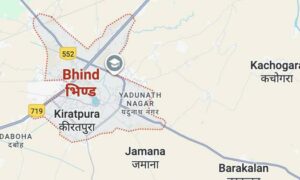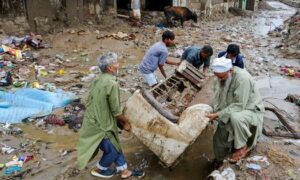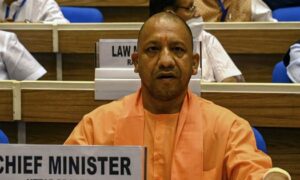
“The days passed thus.
The nights too.
Time marched on.”
How do we remember a past we’d rather forget? What do we owe the people we grew up with when our lives have changed beyond recognition? This Place of Mud and Bone by Sanjay Bista, translated from the Nepali by Anurag Basnet, is a quiet, powerful novel that explores these questions through the lives of six friends from the village of Labda. Set during and after the Gorkhaland movement of the 1980s, the story follows them over three decades as politics, violence, and memory shape their paths. Some stay, some leave, but none of them remains untouched by the history unfolding around them. The novel doesn’t focus on as much on the details of major events as on how these incidents echo in personal lives – through silence, distance, and the weight of remembering. It’s a story about friendship, loss, and the quiet costs of growing up in a time of conflict.
Brutal inheritance of memory
This is a profound and devastating novel that brings to the surface a region and a resistance often ignored in the broader discourse of Indian literature. Set in and around the Darjeeling hills during the Gorkhaland movement of the 1980s, the novel traces the lives of six friends whose childhood friendship is slowly eroded by violence, ideology, and time. Through a narrative spanning three decades, Bista crafts a powerful story of friendship, fracture, and the brutal inheritance of memory.
Anurag Basnet’s translation reads with grace and emotional weight. Even without knowing Nepali, one can sense that the novel retains a strong cultural texture and reflects the nuances of the original language.
The novel is just as much about personal transformation as it is about political disillusionment. Karnabahadur, Tshering, Ambar, Buddha, Rajvir, and Sarita all carry the weight of history in intimate ways. Their stories are painful and real: a suicide, a murder, madness, and survival through silence and compromise.
Bista doesn’t romanticise the hills; instead, he captures their contradictions, the beauty, the violence, and the longing. His prose moves like memory: fragmented, lingering, and unexpectedly brutal.
What makes the novel stand out, in my opinion, is its refusal to offer easy hope. It is not a redemption story but a reflection on history, identity, and the cost of belonging. The characters are not always heroes or martyrs but ordinary people trying to survive amidst forces much larger than themselves.
History remembered and forgotten
Bista’s writing is spare and haunting. There is a restraint in the prose that allows emotion to emerge without embellishment. The structure of the novel, shifting between perspectives and years, mirrors the fragmented nature of memory. These narrative fractures do not confuse; rather, they replicate the trauma and dislocation the characters endure. The hills, ever-present and unchanging, stand in contrast to the instability of the lives of the people living in the hills, observing as lives are broken and remade.
Another notable aspect of the novel is its attention to how history is remembered and forgotten. Characters often recall events differently or refuse to speak of them at all. Memory becomes both a refuge and a curse. This tension between remembering and silencing runs throughout the novel and reflects a larger cultural amnesia about the Gorkhaland movement itself. In this sense, This Place of Mud and Bone is more than a novel; it is an act of reclamation.
This Place of Mud and Bone, Sanjay Bista, translated from the Nepali by Anurag Basnet, Penguin India.
📰 Crime Today News is proudly sponsored by DRYFRUIT & CO – A Brand by eFabby Global LLC
Design & Developed by Yes Mom Hosting






